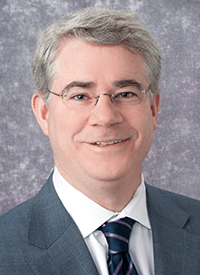I am currently Visiting Professor of Bioengineering at the University of Pittsburgh's Swanson School of Engineering and a cardiothoracic surgeon of Asheville Heart in Asheville, North Carolina. I previously established and directed the Thoracic Aortic Disease Research Laboratory within the McGowan Institute for Regenerative Medicine at the University of Pittsburgh to facilitate translational basic science research on the vascular biology and biomechanics of thoracic aortic diseases. In 2003, I began and have since maintained a thoracic aortic tissue bank to facilitate this research that now houses over 1000 thoracic aortic tissue samples, over 750 aortic smooth muscle cell lines (of which many have now been immortalized for more controlled experimental use). In step, I have directed studies aimed at identifying the cause of thoracic aortic aneurysm formation most specifically in the context of BAV-associated aortopathy. One overarching hypothesis of our work is that reactive oxygen species play a pivotal role in the TAA formation, and we introduced the novel theory that the BAV-associated aortopathy is mediated by cellular oxidative stress, altered biomechanics in the wall, and a unique matrix remodeling process--all of which are mechanisms distinct from those occurring in degenerative aneurysms.
Prior to my current position, I held positions as the Ronald V. Pellegrini Professor and Chief of the Division of Cardiac at the University of Pittsburgh and Co-Director of the Heart and Vascular Institute at UPMC, Chief of Cardiac Surgery at Brigham and Women's Hospital, and Director of Cardiac Surgery Research at the University of Maryland School with early-career Assistant Professor positions at the University of Pennsylvania and Northwestern University. Throughout my career I have maintained primary academic and clinical interests focused on valvular heart disease, thoracic aortic disease and vascular biology. My clinical research interests include the innovation of techniques for aortic valve repair and preservation, a distinct area within cardiac surgery that has been poorly developed. My most significant clinical contribution to the field in this regard has been the designing of a novel technique to repair severely regurgitant bicuspid aortic valves (BAV). I also developed a comprehensive, pathoanatomically-based arch reconstruction strategy for type A aortic dissection repair focused on reduction of neurologic complications.
